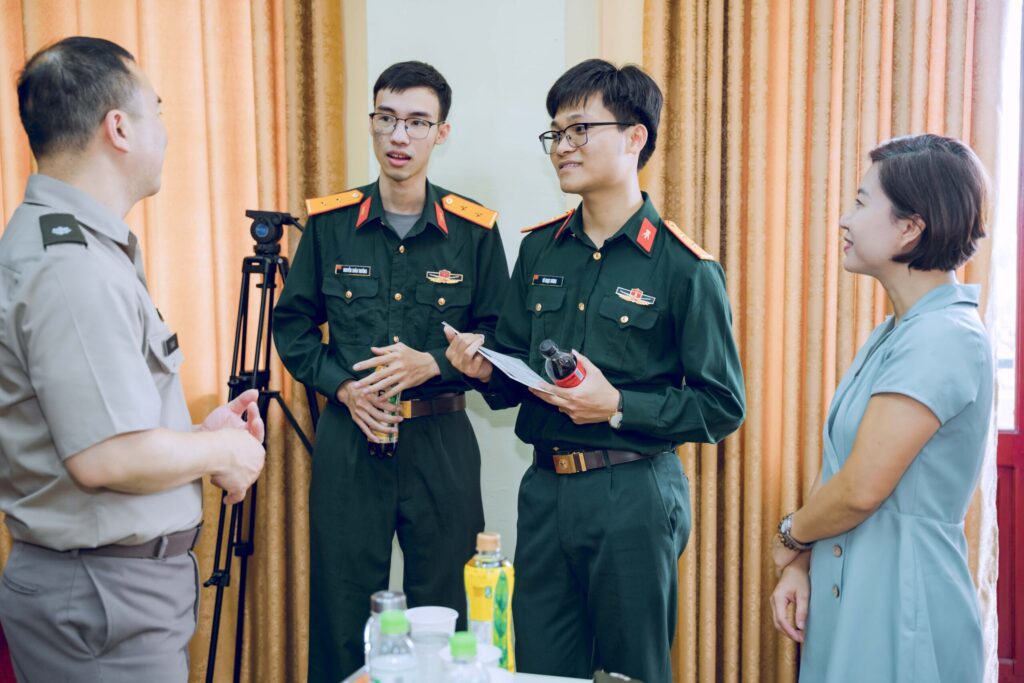English Language Training instructors in Vietnam work on recognizing pronunciation errors to improve their students’ speaking skills.
Out of the four language skills, speaking is one of the great obstacles for any language learner. Students in Lana’s English Language Training (ELT) program in Vietnam are no exception. They grasp vocabulary and grammar concepts easily, but speaking clarity and pronunciation pose a continuous challenge. Many students in the program are fluent and have an impressive ability to speak quickly with a large lexical variety in complex sentences. However, even these students make pronunciation errors typical of Vietnamese speakers, and the challenge for the instructors is to get them to realize when they miss these phonemes and to self-correct. The major issues with English pronunciation for Vietnamese students are three-fold: consonant clarity, phrase chunking, and syllable stress. Recognizing pronunciation errors is the first step to improving English speaking skills.

Consonant Clarity
First, and most important, is consonant clarity. Vietnamese morpheme structure is simple: monosyllabic words, no consonant clusters, and no final consonants that are followed by aspirants. When Vietnamese English language learners (ELLs) pronounce English words, they often leave out the final consonant. For example, the words ride, rile, rind, rife, ripe, rhyme, write, rise, and rice all end up morphing into one word “rye.”
Furthermore, Vietnamese ELLs will reduce consonant clusters by one or more sounds.
- street sounds like treat
- most sounds like moat
- scramble sounds like kramble
Finally, and most frequently, Vietnamese ELLs often drop the final -ed and -s sounds. They will make no sound difference between the following words:
- likes and like
- watches and watch
- played and play
- landed and land

Phrase Chunking
Secondly, is phrase chunking. Native speakers often connect words together in sentences. They might say the sentence, “Jill likes it,” as, “Ji-like-sit.” However, Vietnamese words are always spoken with separation which gives a halting staccato, “Jill – likes – it.” Adding in consonant errors, and the sentence comes out more like: “Jieu – lie – ih.”
Longer sentences can be a challenge because the student may not know to put a small pause between phrases. Natural “chunking ” in a sentence is, “He started the marathon / but decided to stop running / after he passed / the 8-mile marker.” This sentence may cause a student to either just say each word separately, or try to say longer phrases with an unnatural pause like, “…to stop run / ning after he passed. ..” which is jarring for a listener.

Syllable Stress
Finally, Vietnamese ELLs struggle with differential stress on words and syllables. Since Vietnamese is a tonal language and mono-syllabic, each word is spoken with the same stress. This means that when learning English, students will often say each word with full vowel pronunciation and an even level of stress and speed. Even if a student can clearly pronounce all consonants, a sentence can sound robotic and flat with all syllables given a machine gun cadence, “tat-tat-tat-tat-tat.” Yet, a word in English like “how” in a sentence might need to be stressed or unstressed depending on the sentence. For example, it is correct to stress in, “How are you doing today?” but not in, “She knows how to swim.”
What’s more, many Vietnamese students take unstressed syllables in longer words and completely drop them. This means they will reduce a word like, “expensive” to “pensive”, or even further reduced to “pensy.” Putting these three issues together, a student who struggles with speaking clarity might take a sentence, “It is an expensive watch,” and say it more like, “Ee, ee, any, pensy, wat.”

Correcting Speaking Pitfalls
There are a few strategies I use to deal with these pronunciation errors. First, is to drill words one syllable at a time, starting from the last and working up to the first. I will divide a word like “expensive” visually as “ek-spen-siv.” First, we start with “siv” until it’s clear, then we drill “spen,” and finally we put the two together for “spensiv.” We finish drilling with the “ek” and add it all for the full set of sounds: “ek-spen-siv,” which is first said slowly with increasing speed.
Another technique is reading a dialog out loud. I first read for the whole class at about 60% speed, giving very clear stress and pausing, while students mark out these areas. Next, I ask them to work alone doing “mumble practice.” This means that each person gently says the passage just loud enough to practice the sounds and hear oneself. Following that, I place the students in pairs and they take turns reading the sentences. This allows peer correction and practice. Finally, I nominate students to read a sentence to the whole class, give students the chance to self-correct, and give spot corrections as needed. It’s important that students are recognizing pronunciation errors for themselves, so they can self-correct and not rely on their instructors to fix their errors.
Over the past two weeks, I’ve given dialogs for practice as homework. Then, we did this four-step process with the text in class. Although some of the same difficulties persist, I’ve already noticed a few of the students begin to put natural pauses in a sentence and say final consonants more often. It’s an improvement that is not uniform and takes time, repetition, and patience.
